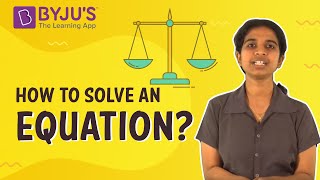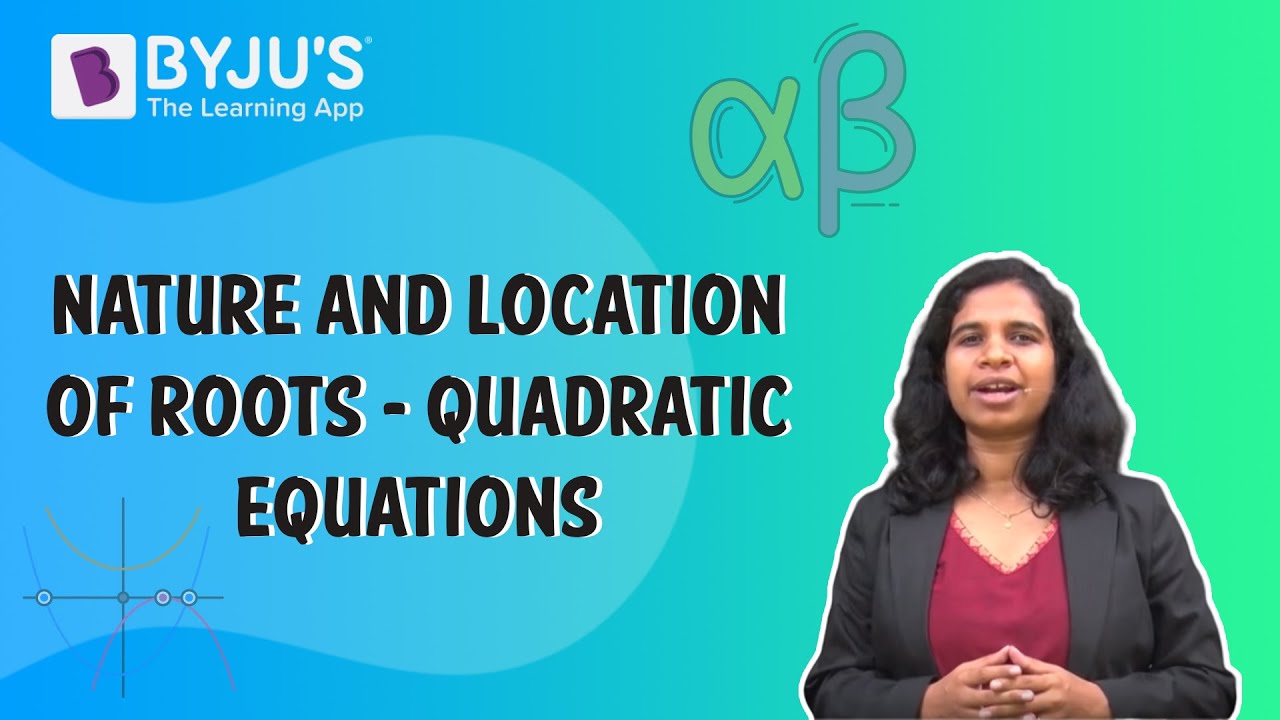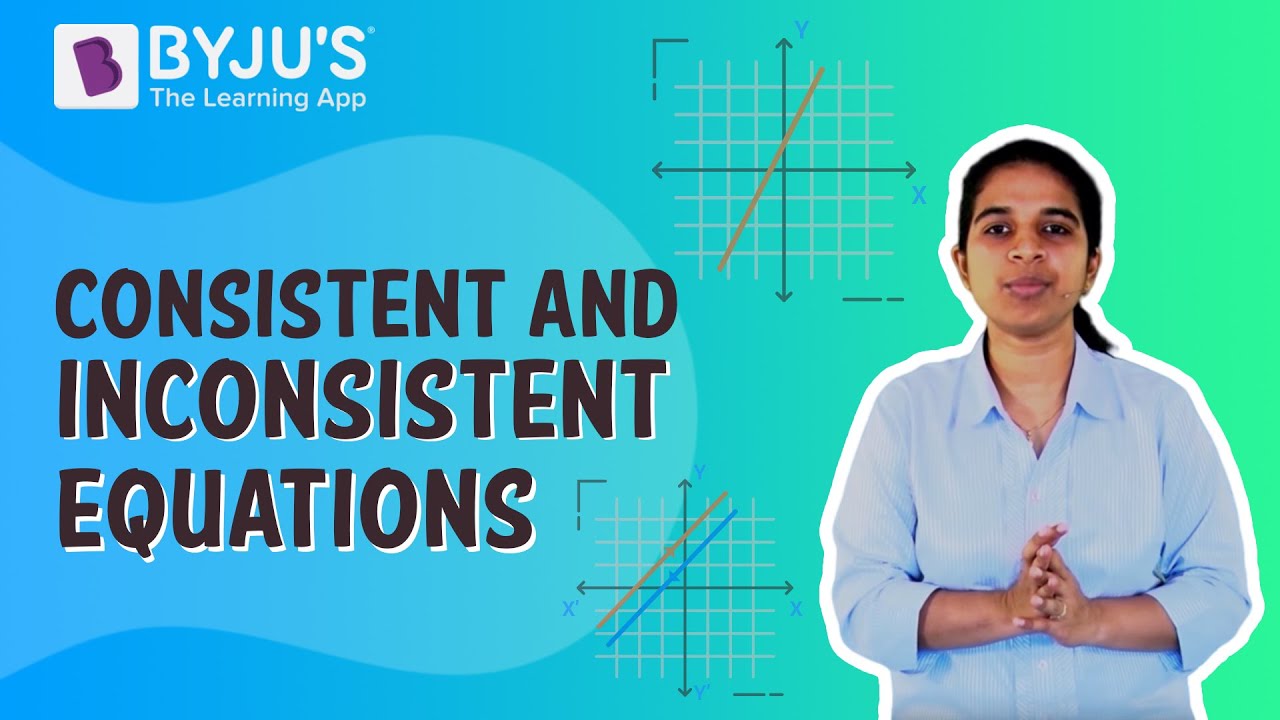Maths equations questions with solutions are given here for students to practice how to solve an equation. In mathematics, when an expression is equated to some value or two expressions are put into equality, it is called an equation. A maths equation necessarily contains some unknowns whose value we have to calculate. A general structure of the equation is given below:

There are many types of equations:
- Linear equations
- Linear equations in one variable
- Linear equations in two variables
- Quadratic equations
- Cubic equations
- Biquadratic equations
- Differential equations
- Simultaneous equations, etc.
There are particular methods to solve various types of maths equations. Here we shall only practice questions on simple equations to get a basic understanding of solving an equation.
Learn more about Equations in maths.
Video Lesson on Solving Equations

Maths Equations Questions With Solutions
Now that we have recapitulated about how to solve a basic linear equation in one variable, let us try some questions.
Question 1: Solve for x: 2x + ½ = 21.
Solution:
2x + 1/2 = 21
Multiply both sides by 2, we get,
2 × 2x + 2 × ½ = 2 × 21
⇒ 4x + 1 = 42
Subtract 1 from both sides
4x = 42 – 1
⇒ 4x = 41
Divide both sides by 4, we get
x = 41/4
Or, x = 10¼
|
Transpose Rules: While solving a equation pass something from one side of equation to another side, we refer it to as transposing. Some rules need to be followed while solving equations using transpose:
|
Learn more about Linear equations.
Question 2: Solve the equation for x:
Solution:
We have,
Question 3: Solve the following equation:
(2p + 3) – 4 = p
Solution:
We have,
(2p + 3) – 4 = p
⇒ 2p + 3 – 4 = p
⇒ 2p – p = 1
⇒ p = 1
Question 4: The perimeter of a rectangle is 90 cm. Find the area of the rectangle if the length of the rectangle is twice its breadth.
Solution:
Let the breadth of the rectangle be a cm, and then its length will be 2a cm.
Now, Perimeter of the rectangle = 2 × (2a + a) = 90
⇒ 2 × 3a = 90
⇒ 6a = 90
⇒ a = 90/6 = 15
∴ breadth = 15 and length = 2 × 15 = 30 cm
Area of rectangle = 15 × 30 = 450 cm2.
|
Linear Equations in Two Variables: A linear equation which has two unknowns. For example, 2x + 5y = 6.
|
Read the following articles:
- Linear Equations in Two Variables
- Simultaneous Equations.
- Consistency and Inconsistency of System of Linear Equations
- Methods of Solving System of Linear Equations
Question 5: Find three possible solutions to the following:
(i) 5y = 2x + 2
(ii) 9x + 3y = 1
(iii) 1/(x + 5) = 2/( y – 6)
Solution:
(i) 5y = 2x + 2
Writing one variable in terms of other
y = ⅕ (2x + 2)
Now for x = 0, y = ⅖
x = 1, y = ⅘
x = ½, y = ⅗
Therefore, the solutions are (0, ⅖), (1, ⅘) and (½, ⅗).
(ii) 9x + 3y = 1
⇒ y = ⅓ (1 – 9x)
For x = 0, y = ⅓
x = ⅓, y = –⅔
x = 1, y = –8/3
Therefore, the solutions are (0, ⅓ ), (1, –8/3) and (⅓, – ⅔ ).
(iii) 1/(x + 5) = 2/( y – 6)
⇒ y – 6 = 2 (x + 5)
⇒ y = 2x + 16
For x = 0, y = 16
x = ½, y = 17
x = –8, y = 0
Therefore, the solutions are (0, 16), (½, 17) and (–8, 0).
Question 6: Solve the system of equations:
x + 2y + 3 = 0
2x + 3y + 5 = 0
Solution:
Let, x + 2y + 3 = 0 …(i)
2x + 3y + 5 = 0 …(ii)
Multiplying (i) by 2 on both sides, then subtracting from (ii), we get;
(2x – 2x) + (3y – 4y) + (5 – 6) = 0
⇒ y = –1
Substituting y = –1 in (i), we get x = –1.
|
Condition for existence of solution for simultaneous equations: Let the pair of linear equations be a1x + b1y + c1 = 0 and a2x + b2y + c2 = 0 , then,
|
Questions 7: Find the value of k for the given simultaneous have a unique solution:
(k + 1)x + 2ky + 3 = 0
6x + 5y – 1 = 0
Solution:
We know for simultaneous equations having a unique solution, the condition is
We shall solve for
∴ (k + 1)/6 = 2k/5
⇒ 5k + 5 = 12k
⇒ 12k – 5k = 5
⇒ 7k = 5
⇒ k = 5/7
∴ the value of k can be any real number other than 5/7.
Question 8: Given a two-digit number, whose digits sum up to 13, when the digits are reversed the new number is 9 less than the original number. Identify both the numbers.
Solution:
Let digits of the original number be x and y such that the original number is 10x + y.
According to the question,
x + y = 13 ….(i)
Number after reversing the digits = 10y + x
And 10y + x = (10x + y) – 9
⇒ x – y = 1 ….(ii)
Add equation (i) and (ii), we get,
2x = 14
⇒ x = 7 and y = 6
Therefore, original number is 76 and the reversed number is 67.
Question 9: Solve the following equation: x2 – 2√2 x – 6 = 0.
Solution:
x2 – 2√2 x – 6 = 0
⇒ x2 – 3√2 x + √2x – 6 = 0
⇒ x(x – 3√2) + √2(x – 3√2)
⇒ (x + √2)(x – 3√2)
∴ x = –√2 or 3√2
Learn about: How to solve a quadratic equation?
Question 10: Solve the following equation: x2 + 11x + 27 = –3.
Solution:
x2 + 11x + 27 = – 3
⇒ x2 + 11x = –3 – 27
⇒ x2 + 11x = – 30
⇒ x2 + 11x + 30 = 0
⇒ x2 + 5x + 6x + 30 = 0
⇒ x(x + 5) + 6(x + 5) = 0
⇒ (x + 5)(x + 6) = 0
∴ x = –5 or –6
Recommended Videos


Related Articles | |
|---|---|
Practice Questions on Maths Equations
1. Solve the following equations for x:
(i) x + 3 = x – 4
(ii) 12/(2 – x) = 1/(3x + 8)
(iii) 12x + 43 = 2x
(iv) 1/(√2x +1) = √2
2. Find three solutions of the following equations:
(i) 2y = x + ½
(ii) y = x2 + 4
(iii) 2x + 3y = ¼
(iv) 2/x + 3/y = 0
3. Find the solution of x for the following equations:
(i) x2 + 2x + 1 = 2
(ii) √3x2 + (√6 – 5)x = 5√2
4. Find the area of a circle whose perimeter is 44 cm.
Keep visiting BYJU’S to get more such Maths lessons in a simple, concise and easy-to-understand way. Also, register at BYJU’S – The Learning App to get complete assistance for Maths preparation with video lessons, notes, tips and other study materials.